Started as a rumor, the story that Vlad the Impaler, Vlad Tepes or Dracula, a Romanian medieval prince, loved to feast on blood and not wine, snowballed along the centuries to such an extent that it is accepted as truthful today.
Before we dress up and attend Vlad’s medieval feast to find out the truth by ourselves, what’s in his cup, wine or blood, we owe it to the historical facts to acknowledge his bravery in battle.
When my children were young, as a loving mother I was the one in charge of pouring their drinks; at least most of the time. But if we would have been a royal family living during medieval times, we would have had a personal cup-bearer. Not too bad, isn’t it? Not to mention drink wine with most meals, as the water was too unclean to be consumed. Oh, not so sure about this…
The first documentation of such a job, cup-bearer or paharnic in Romanian (from pahar meaning cup) dates back to 8 January 1392. The paharnic was also responsible for the royal cellar. From the same time dates the first documented stolnic job, or the King’s seneschal, responsible with his food and meals. And making sure there was plenty of! In Romania’s former principalities, Wallachia, Transylvania, and Moldovia, these jobs were filled by boyar aristocrats. Always a source of conspiracies, double cheats and overturn.
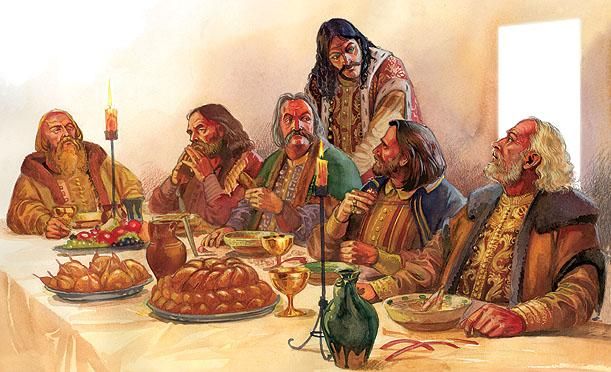
It was this piece of information tht reminded me of some stories about Vlad the Impaler and his medieval feast on blood… As a Romanian born, I do know this is not true, but how many of you know the real story?
Read on.
Vlad the Impaler and his medieval feast. Blood or wine?
Vlad the Impaler, born in Sighisoara, ruled Wallachia over three terms during his life. Considered one of Romania’s national heroes, Vlad is the hero of plenty of terrifying accounts. Some true, some lost in translation. Let’s see the known resources of the time.
History is true as long as it is based on credible, unbiased resources.
German stories about Vlad the Impaler
During the Autumn of 1462, a Saxon chronicler from Brasov compiled a collection of over thirty horror stories about Vlad the Impaler and his most uncommon endeavors, Geschichte Drakole waide – The History of Prince Dracula (Istoria lui Drăculea vodă). According to this, Vlad ordered the impaling of approximately three hundred Saxon merchants from Transylvania and had others burned alive.
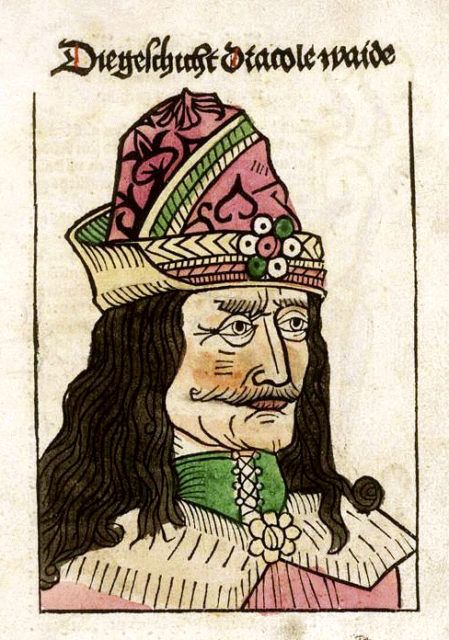
There are no other known written accounts of the same genre left by the Saxon writers from Brasov to better understand the style of the time, only the ones about Vlad.
Why they did it?
Killing and torture were pretty common during Medieval Times, still, Vlad’s endeavors seemed to stand above the rest and to have the right frightening impact on the peasants. The fascination with death, under all its aspects, is certainly deeply rooted in human nature. From here was but a short distance to Vlad and his medieval feast on blood.
It is worth considering that, at the time when this collection of horror stories was compiled, Matei Corvin (Matthias Corvinus, son of Iancu de Hunedoara) was King of Hungary.
Matei Corvin and Vlad the Impaler had a secret agreement to become allies and start an anti-Ottoman crusade and free Constantinople, as well as block the spread of the Ottoman Empire westward. Even Pope Pius II supported them by giving Matei 40 000 gold coins for soldiers and warships.
But Matei Corvin needed the Pope’s moral and financial support for his own political struggles, to rally to his cause the nobility of his country, even under the banner of the Crusade. In fact, he pursued his main goal relentlessly: to be recognized king of Hungary by the emperor.
Matei Corvin changed his mind at the last moment (after receiving the Pope’s financial contribution) mainly due to extreme political changes in the Holy Roman Empire and Corvin’s wish to keep the Holy Crown of Hungary at all cost. Thus he used the Pope’s money to pay for it, fulfilling his own pland and did not joined Vlad the Impaler in the anti-Ottoman crusade.
This entire game of Matei Corvin led to Vlad the Impaler facing the army of Mehmed II alone in the famous Night Attack at Târgoviște on Thursday, June 17, 1462. Here, Mehmed came with an army ‘in which in numbers and armaments must have been equal to that which he had employed on the siege of Constantinople.’ The Sultan wrote of 150 000, chroniclers of the time mention 400 000. Vlad the Impaler, while still awaiting Matei Corvinu’s support that never arrived, mustered an army of 30 000 (22,000 and 30,900 chroniclers say) men, women, and children over the age of twelve. It was in this battle that Vlad ordered that 23,844 Turks be impaled.

Vlad the Impaler, between a rock and a hard place
After the retreat of the Turks, the situation did not improve for Vlad.
His younger brother, Radu the Handsome, Radu cel Frumos, had the Turk’s protection (situation going back twenty years to the time when both Vlad and Radu were held hostages there to secure their father’s loyalty).
The Saxons of Transylvania, instead of supporting Vlad, conflicted him because Vlad had limited their economic freedom in Wallachia in his attempt to support the local merchants.
So the Saxons of Transylvania compile an account of Vlad’s acts and complain to Matei Corvin who sees this as the best opportunity to please them as well as solve his own problems, thus turning Vlad the Impaler into a scapegoat.
Matei Corvin ordered that Vlad the Impaler be captured and imprisoned by the end of 1462. And then Matei Corvin sent ambassadors to Venice and to the Pope to explain his acts and his financial spending. The ambassadors brought along texts containing evidence of treason and “inhuman cruelty” of Dracula. The texts were compiled by the Saxons of Transylvania, Die Geschichte Dracole waide (The Story of Prince Dracula).
You can see how Matei Corvin, having all these horror stories about bloody Vlad the Impaler, so un-Christian like, could explain his last-minute abandon of a Christian Crusade.
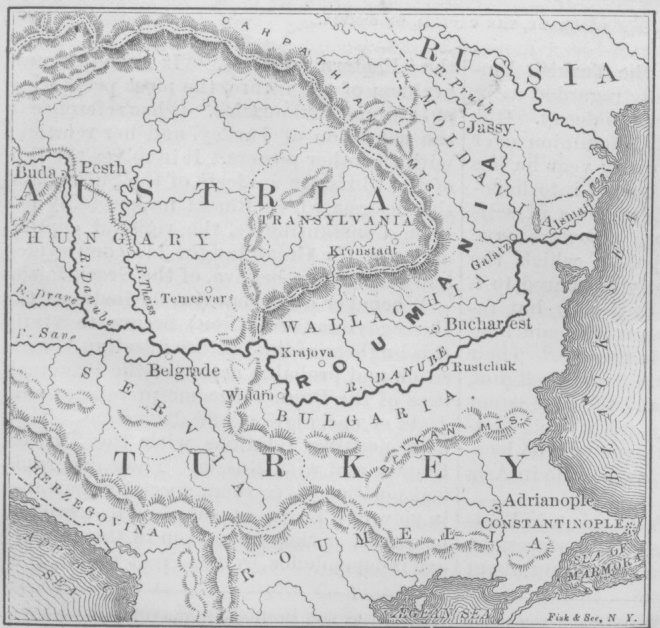
At the same time, Gutenberg’s press, although still brand new, was very much in operation. Before 1500 there were already over fourteen editions (surely each one revised and improved) of Vlad’s horror stories circulating Germany. By the end of the 16th century, thirty such editions were in print.
The Story of Prince Dracula, as written by the Saxon merchants
The accounts included here refer to Vlad the Impaler’s main reign from 1456 to 1462. The text was recorded almost at the same time by three witnesses. Thomas Ebendorfer, professor at the University of Vienna, wrote Latin chronicle, Cronica Regum Romanorum (Kaiserchronik) and he considers the events as taking place between May and August 1463. Pope Pius II mentioned it in his Commentaries and considers that the stories took place between April and July 1463. Lastly, the accounts of the German minstrel Michel Beheim who composed his 1070 verses long poem. Beheim used the Saxon tales and new information provided to him by a monk, Jacques de Gorrion (Gornji Grad).
The sequence of events in the three sources is identical, proving the existence of a common source, the Saxon stories, brought by the Hungarian delegation and put in circulation June-August 1463 in Vienna. A renowned printer of that time was Ulrich Han who worked in Mainz with Gutenberg and had already published an Almanach, Almanack in Vienna during 1462
Further printings only began in 1488 and lasted until 1559-1568 in Nuremberg, Lübeck, Bamberg, Leipzig, Augsburg, Strasbourg, and Hamburg. Yet, there are great differences between the first edition from 1463 and the 1488 texts, with regards to the order and the content of the events described.
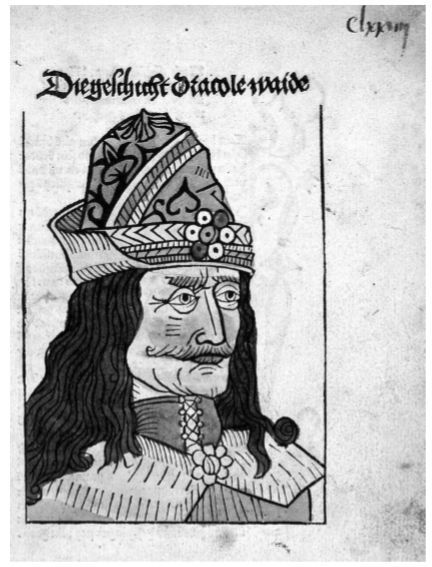
Some tales said Vlad ordered his victims to be chopped like the cabbage. Others depicted Vlad boiling his victims alive, in huge cauldrons, only their heads sticking out. Others were so horrible and unbelievable, I won’t even mention them. But some are worth sharing.
After the old governor ordered that old Dracul be killed, Draculea (Vlad the Impaler) and his brothers gave up their Islamic believes and promised to protect the Christian faith.
The same year, Vlad was made governor of Wallachia. Immediately he orders the murder of Vladislav Voda, the previous ruler.
Vlad ordered that Saxon villages and fortresses near Sibiu, in Transylvania, be burned to the ground. The Transylvanian villages of Klosterholtz, Nuwdorff, Holtznetya were turned to soot.
It is worth mentioning here that although I don’t approve of Vlad’s crimes, some of the places Vlad set alight – if not all – harbored boyars who wished to take Vlad’s place as ruler of Wallachia.
Dracula ordered that all the thrives of his kingdom be caught and he had them all impaled
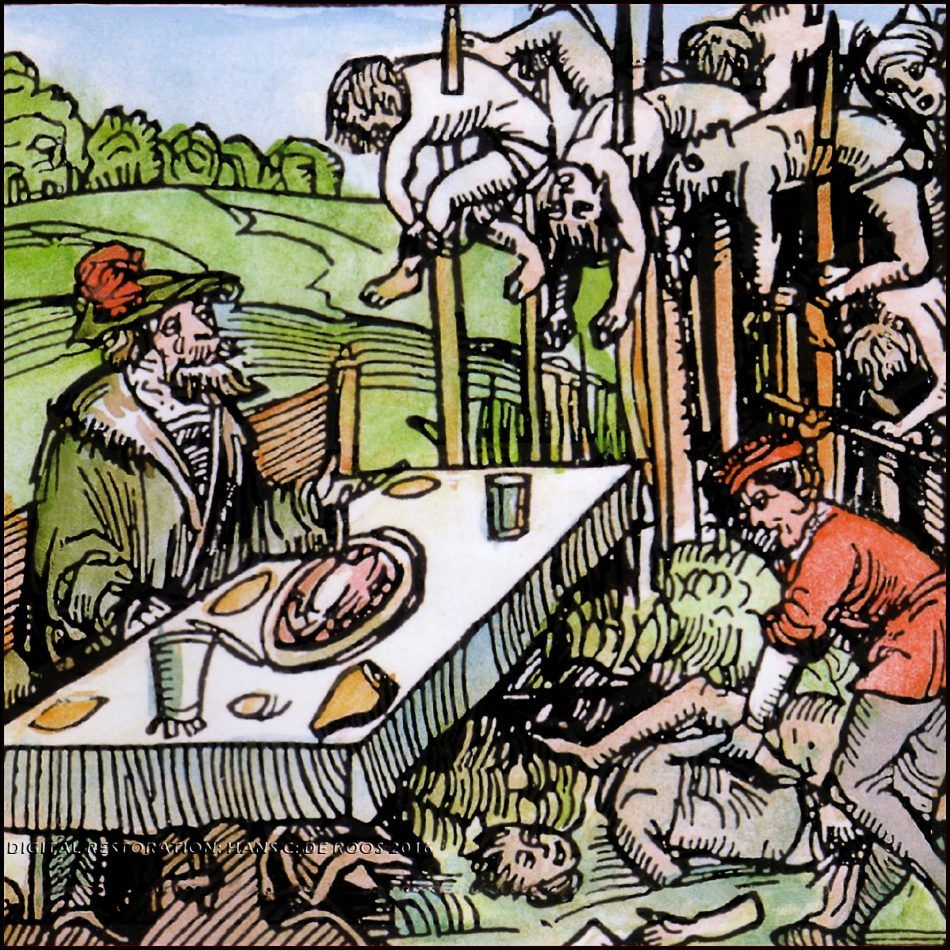
When the Turk ambassadors arrived at his court and, according to their tradition, did not remove their headdresses, the turbans, Vlad ordered that they are nailed to the ambassadors’ heads. As a lesson.
One of the first things Vlad did was to order that all the boyards who cheated his father and contributed to his death be caught and impaled.
Once a priest came by, preaching that sins can never be forgiven. Vlad invited him to his place, to share his meal. So Dracula breaks bread and starts eating, all the time beckoning the priest to take a bite, knowing that it was before sundown the priest should fast. And the priest ate. Enraged, Vlad asked him how he can preach about sins when he sins himself?
Another story speaks of a great feast Vlad organized for all the lazy, old, sick or generally non-working people of his kingdom. He first ordered that a great hall be built, then he had a banquet table set inside, filled with mouth-watering food and drinks. And invited them all to the feast. When they were enjoying themselves the most, he ordered the doors shut and the whole place set on fire. To teach everyone a lesson about the value of work.
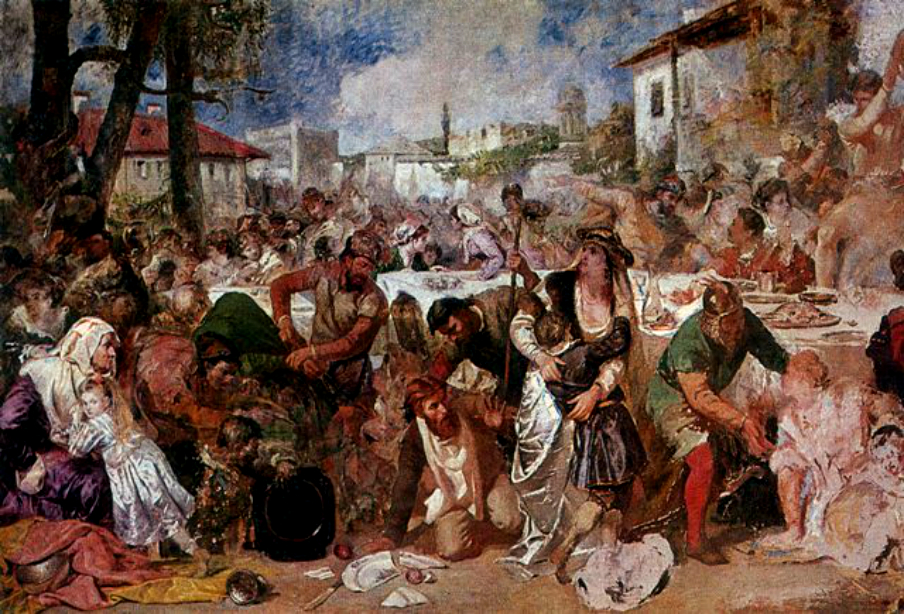
Once, a foreign merchant complained to Vlad that, while he spent the night at an inn, 160 ducats have been stolen from his cart. Vlad ordered a hunt of the thief who was later impaled. Then he repaid the merchant but ordered that 161 ducats be returned. When the merchant came to Vlad to thank him for his help, he also returned the extra coin. Vlad appreciated the man’s honesty and admitted to his plans of impaling the merchant, should he had not come clean.
At a major crossroads, where there was a well for thirsty travelers, Vlad ordered that a golden cup be placed, for everyone’s usage. The cup stood there as long as Vlad was the ruler of Wallachia, as a testimony of Vlad’s love for honesty and order.
Vlad’s life included in the Cosmography by Sebastian Münster
The stories of Vlad the Impaler are also included in the 1544 Cosmography by Sebastian Münster, the earliest German-language description of the world.

What exactly did Vlad the Impaler dip in the blood?
Michael Beheim’s song about Vlad the Impaler
In a time when reading was not an option for everyone, these stories were further spread by troubadours or minstrels, Minnesänger. One such troubadour was Michael Beheim who compiled ‘Story of a Violent Madman Called Voïvode Dracula of Wallachia’ or Ainem wutrich der heis Trakle waida von der Walachei, a 1070 verse long song. Beheim first sang his poem at the court of the Holy Roman Emperor Frederick III during a long winter in 1463. Here is a tiny small extract:

Translating to:
'It was his pleasure and gave him courage
To see human blood flow
And it was his custom
To wash his hands in it
As it was brought to the table
While he was taking his meal.'
(Translated by German scholars Clemens Ruthner and John Buffinga)
Well, hands, not bread dipped in blood.
I try to imagine the people listening to this song, perhaps having already heard of Vlad the Impaler, Dracula, imagining how Vlad would enjoy a (medieval) feast on blood.
I wanted to mention this detail of hands / bread, as there was an entire dispute between two Boston Professors, McNally and Florescu, and the Canadian Professor Emerita Elizabeth Miller, leading expert on Bram’s Stoker’s Dracula – over what exactly did Vlad the Impaler dip in the blood, bread or his hand?
Bottom line is:
- Bram Stoker, when he wrote Dracula (1895 – 1897), might have been familiar with Beheim’s poem about Vlad Tepes.
- 1972, McNally and Florescu used a liberal translation of Beheim’s poem to tie Bram Stoker’s Dracula to the real Vlad the Impaler, Dracula III. This translation stated that Vlad dipped his bread in the blood.
- Elizabeth Miller states that Stoker only borrowed the name and bit of historical information and that there was no mention of Vlad the Impaler, Dracula III in Stoker’s notes.

More bloody stories about Vlad the Impaler
Russian stories about Vlad the Impaler
in 1490 the monk Eufrosin translated into Russian a collection of 19 such horror tales of Hungarian origin: Stories about Prince Vlad. We know the origin of the author because he mentions ‘King Mátyás, using Matthias Corvinus Hungarian name. We also know that their writer was a Christian believer. These stories do depict Vlad’s bravery against the Ottomans. But do they mention of Vlad enjoying a medieval feast on blood?
This collection was less spread in the East since here Gutenberg’s print was not used yet. Thus, mostly the monarchs, the monks, and the clerics had the chance to read it. But it reached the hands of Ivan the Terrible who, they say, was inspired by Vlad the Impaler. We are familiar with the Tsarist autocracy of byzantine inspiration, and how the Russian people stayed loyal to their Church, thus revering their Byzantine heritage. Remember, this happened shortly after the fall of Constantinople in 1453, an event considered by many as a sign the End time was near. Also, a time when the idea Moscow as a Third Rome was of great appeal.
These stories read today as historical fictional accounts, making Vlad the Impaler a mythical character.
One such story depicts Dracula enjoying his lunch beneath a forest of impaled bodies. A servant was seated opposite Vlad, invited to share in the King’s meal. When the henchman could not stand enveloping reek of death anymore and covered his nose, Vlad was seized by murderous rage and ordered that the servant be impaled. ‘On the height of the stake the air is clean and so no stench will reach your nose’, he is supposed to have said.
Another time, an emissary of King Matei Corvin arrived to see Vlad the Impaler. It was an important delegate, a high Polish nobleman. He, too, was invited by Vlad to share his feast among the impaled bodies. Nearby, a brand new, gold spike stood. Vlad asked the emissary how he finds the spike. Whose was it? What would you answer? The Polish nobleman said that perhaps a boyar upset Prince Vlad and he, as a good Prince that he is, wants to show his respect for the man’s position at his court, impaling him into a stellar spike. Vlad liked the emissary’s answer but explained that the spike had been custom made for the Polish nobleman. The man accepted his fate, coming from such a fair and expert judge, admitting that he, alone, is to be blamed for his death and not Prince Vlad. Dracula liked the man’s answer, stating that he is a true emissary who knows how to speak to a sovereign and even granted his clemency.
Other stories also mention Vlad’s dislike for emissaries, Kings or any Sovereign who came to see him but were not dressed according to their rank or could not answer his riddles. He would simply order their death by impaling, stating that it wasn’t his fault, but their own, or their King’s, for not educating them before coming to speak to him.

Vlad’s black and white vision of the world
One of the stories translated into Russian speaks of Vlad the Impaler after he was released from Matei Corvin’s imprisonment (1462 – 1475), depicting his righteousness and character. Vlad was given a house in Pesta to live in, before his return to Wallachia. One day, a thief, running from local guards, sought refuge in Vlad’s yard. After him, the Hungarian guards rushed in. Vlad arrived in the yard at the moment a Hungarian sentry took hold of the thief. In one motion, Vlad cut the sentry’s head. The Hungarian King, Matei Corvin, later asked Vlad why he killed the guard. At which Vlad replied that it had been the guard’s fault entierly since he entered the house of a great ruler and inflicted pain one a human being. If the sentry would have asked to speak with Vlad first and presented him with the facts instead of taking the law into his hands – he would have still been alive and Vlad would have ceased the thief himself.
Along the centuries, some kings feasted from gold plates, drinking from silver goblets adorned with jewels, while sitting on thrones nailed in silver, covered in expensive brocade sewn with gold thread, on silk pillows. Others had banquets with countless courses of food, barrels of wine and beer that everyone was expected to drink, eating hundreds of animals cooked just for that one meal. Perhaps this is another reasonas to why Vlad , living at the end of the ruthless medieval era, was imagined to feast on blood.
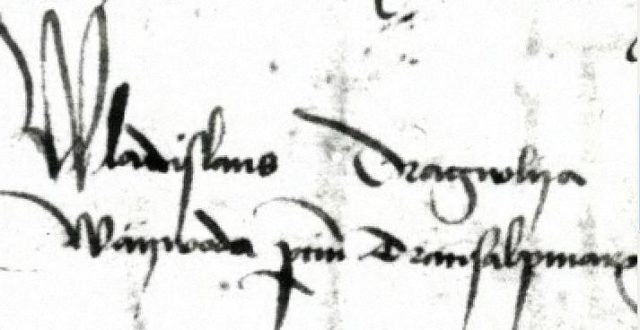
Throughout his life, Vlad the Impaler had one thought on his mind, to protect his country from Ottoman invaders, to assure its autonomy, to build its economic strength, to be recognised as a Great King. Judged harshly by his contemporaries, Vlad was often stood alone in his confrontation of the biggest political power of his time, the Ottoman Empire.
It was this struggle that allowed him to cast one of the biggest shadows throughout history, perhaps as big as the fame he wished to have during life.
My latest book is SILENT HEROES.
How far would you go to save strangers in need?
Who really are the Marines’ most trusted allies?
What if help came from the most unexpected sources, would you still accept it?


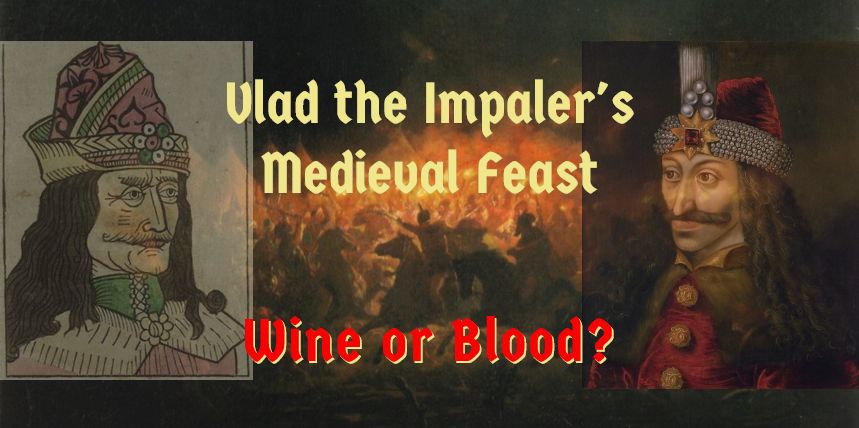
7 Replies to “Vlad the Impaler’s Medieval Feast. Wine or Blood? #Im4Ro”
Comments are closed.